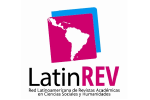Historical-musical approach to the Bomb as an ancestral Ecuadorian rhythm
DOI:
https://doi.org/10.18537/ripa.17.05Keywords:
Ecuadorian music, Ecuadorian dances, bombaAbstract
Music, as an essential part of daily life and society, acts as a cultural transmitter, acquiring unique identities according to regions. This monographic work focuses on the Bomba, a key element of the cultural heritage of the Chota Valley in Ecuador. The Bomba is a fusion of European and ancestral rhythms and genres, prevalent in regions like the Chota Valley, known for its danceable music and its characteristic instrument, also called Bomba. This instrument, made from natural materials such as balsa wood and animal skins, is played while seated and held between the legs. The rhythm of the Bomba, influenced by indigenous, European, and African components, is characterized by its binary compound meter in 6/8, variants of the Bomba dance, this work will compile information on the history, social and cultural influence of the Bomba, its role in festivities, and its teaching to new generations, ensuring its preservation as part of Ecuador's musical heritage. During these festivities, people enjoy the Bomna endlessly, accompanied by a "banda mocha" with improvised instruments such as pieces of penco, combs, gourds, cans, and tree leaves. The lyrics address themes of love, joy, everyday suffering, and have a cultural, festive, and communicational purpose. This rhythm has endured over time, reflecting social reality since the era of slavery and drawing inspiration from its surroundings, although new generations are increasingly influenced by modern, globalized music.
Downloads
References
Andrade, R. (1936). Los negros del Chota. Quito: Editorial Alas.
Ecuador Music/Music of Ecuador. (08 de febrero de 2013). Bomba Música Ecuatoriana. Obtenido de Youtube: https://www.youtube.com/watch?v=5JjX9n-ZlF8
El Ciudadano. (5 de febrero de 2016). Recuperado el 5 de noviembre de 2018, de https://www.elciudadanoweb.com/
El Ciudadano. (05 de febrero de 2016). Asamblea condecora a Alpha Blondy y la Banda Mocha de Chalguayacu. Obtenido de el ciudadano.gob.ec: http://www.elciudadano.gob.ec/asamblea-condecorara-a-alpha-blondy-y-la-banda-mocha-de-chalguayaku/
El Expreso. (2015). 38 comunidades afro rinden homenaje al santo San Francisco Javier. Recuperado el 10 de noviembre de 2018, de https://www.expreso.ec/
El Telégrafo. (11 de septiembre de 2011). Los afroecuatorianos en el censo de población del 2010. Recuperado el 10 de noviembre de 2018, de https://www.eltelegrafo.com.ec/noticias/columnistas/1/los-afroecuatorianos-en-el-censo-de-poblacion-2010
Expreso.ec. (04 de Diciembre de 2015). Festival de Bomba en el Valle del Chota. Obtenido de Expreso histórico: http://www.expreso.ec/historico/festival-de-bomba-en-el-valle-del-chota-LTgr_8720179
Frith, S. (1987). Towards an aesthetic of popular music. Cambridge: Cambridge University Press.
Guerrero. (2000). Enciclopedia de la Música Ecuatoriana. Quito: Corporación musicológica ecuatoriana Conmúsica, Archivo sonoro de la música ecuatoriana.
Guerrero, P. (2000). Enciclopedia de la Música Ecuatoriana. Quito: Corporación musicológica ecuatoriana Conmúsica, Archivo sonoro de la música ecuatoriana.
Kartomi, J. (1981). The processes and results of musical culture contact: a discusion of Terminology and Concepts. s/l: s/e.
Laboratorio Lumier. (21 de agosto de 2015). Grupo Poder Negro. Obtenido de Youtube: https://www.youtube.com/watch?v=V_QSJU0Xfws
Merriam, A. (1959). African Music. Chicago: Universidad de Chicago.
Mora, E. (2002). Ecuador: Patria de Todos. Quito: Universidad Andina Simón Bolivar-Sede Ecuador.
Murriagui, A. (9 de junio de 2009). La Bomba del Chota. Opción, pág. 3.
Nettl, B. (2006). O estudo comparativo de mudança musical: Estudos de caso de quatro culturas. Revista Anthropológicas, 17(1), 11-34.
Palacios, P. (24 de octubre de 2014). La banda mocha, las Tres Marías, Chota, los sonidos del tiempo. Obtenido de Youtube.com: https://www.youtube.com/watch?v=QDWdRXznev8
Peñaherrera, P., & Costales, A. (1964). Historia social del Ecuador: El concertaje de indios y manumisión de esclavos. Quito: Editorial Casa de la Cultura Ecuatoriana.
Ponce, J. (2006). Los Afroecuatorianos. Washington: The World Bank.
Popular, E. M. (28 de septiembre de 2014). La Bomba-Músicas del Valle del Chota. Obtenido de Youtube: https://www.youtube.com/watch?v=U7kq3TNYrnk
R, A. J. (28 de enero de 2017). Poder Negro-Tumbatú. Obtenido de Youtube: https://www.youtube.com/watch?v=rRkxKMBE648
Romero, J. (1997). Los tambores del Candombe. Montevideo: Editorial Luis Ferreira.
Vila, P. (1996). Identidades Narrativas y Música. Revista Transcultural de Música, 17.
Viveros, B. (09 de agosto de 2015). Grupo Marabú Bomba Caliente. Obtenido de Youtube: https://www.youtube.com/watch?v=yrWXNRxwWDo
Published
Issue
Section
License

This work is licensed under a Creative Commons Attribution-NonCommercial-ShareAlike 4.0 International License.










